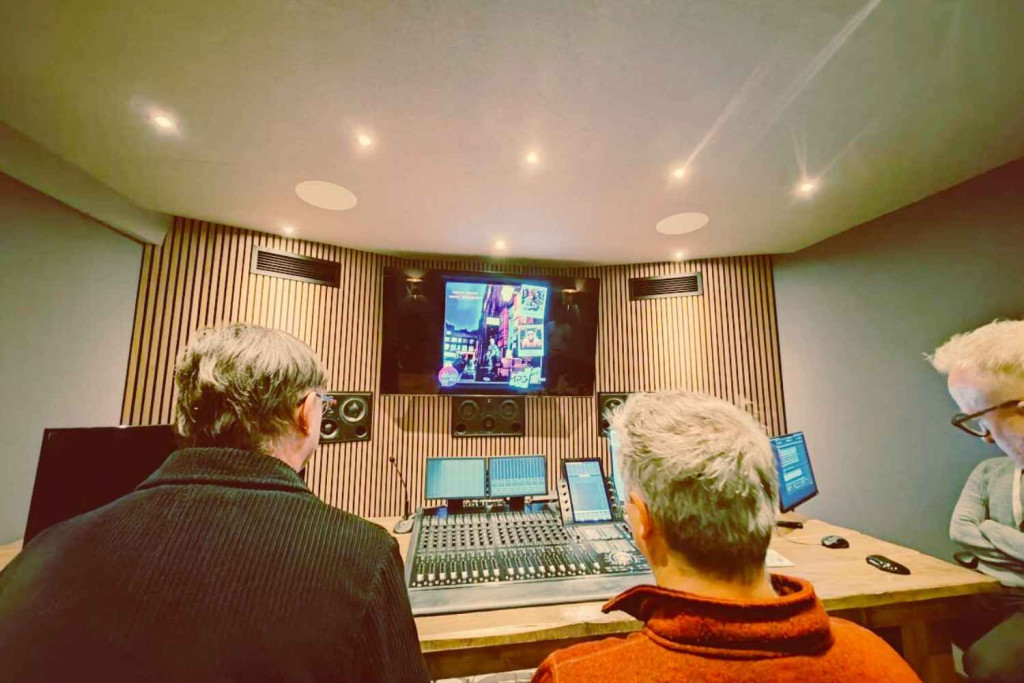I was fortunate enough to recently go to a special hearing of David Bowie’s album Ziggy Stardust, remixed in Dolby Atmos at what once was Trident Studios. In attendance was producer Ken Scott, the man who originally produced the record in 1972, as well as producer Emre Ramazanoglu, who both played their roles in remixing the iconic album.
Trident studios is a legendary space where many of the greats such as Queen, Elton John and Paul McCartney have all played and recorded there. Of course since its heyday of the 60s, 70s and 80s it has evolved quite a bit after it changed hands and was repurposed. Now it mainly focuses on TV and film. Nevertheless the studio walls still have an aura about them and noticing the blue plaque upon entering the venue certainly reminds you that this is a special place.
How did it sound?
A small group of us sat down to listen to the album in its new remixed entirety – Here’s a short video on Instagram.
Firstly, the sheer clarity of this new mix is the first thing that hit me. I could hear every instrument as if I was sat in the middle of the studio room. That was special. There was also some occasional height and depth more than just left and right in standard stereo mixes.
I also picked up on a few other things like the sound of the drums which had a newer power to them. Later when I asked Ken, he said that mixing glam rock drums was difficult and that this time he used some samples to help gain consistency. It really paid off. Of course the real highlight is Bowie’s voice but the drums sounded fantastic.
Let’s get into Bowie’s voice. Ken said that this was the area that perhaps bugged him a little with the original mix and he wanted to bring it out more in this one. And that’s what happened. The level of detail was astonishing. I was in awe of Bowie’s vocal performance even more now. There were even bum notes you could hear (and I think the sign of a great performer is one where even bum notes sound beautiful). Ken mentioned how Bowie often performed an entire song in one take and the effortless nature of it just really came out. I found this particularly true on Five Years and Lady Stardust. This wasn’t an album that made me emotional before, but now I was having to hold it together!
After listening to the album Ken and Emre spoke to us more about the journey of creating a new mix and some of the challenges. Some of the things I picked up on were the following: They loved the new Dolby Atmos format (more on this below). They also barely used any plugins on this new mix. Emre said “I think we used one compressor throughout”.
I believe it will be released on Blu-Ray, and maybe further down the line on Dolby Atmos enabled services (so perhaps Tidal?).
What does Dolby Atmos mean for independent artists?
I’ve worked on about 200 projects now for independent and established artists. Only once have I been asked about Atmos. It seems to be more for high end special projects and remixes at the moment. Even though there has been some encouragement for independent artists to get involved.
The main difficulty is that Dolby Atmos isn’t supported everywhere. Not on Spotify and now somewhat strangely not on Apple Music (perhaps they’re creating their own format?).
I think also the worry sometimes is whether these things are just fads (thinking about 3D cinema?). I’m not sure this is a fad as such, but I don’t think it’s going to take over standard stereo mixes – not any time in the next 5 years.
If you’re an independent musician there is also the cost. But perhaps more importantly, you may be limiting the reach your music has of finding new fans, because Dolby Atmos isn’t a standardised format.

